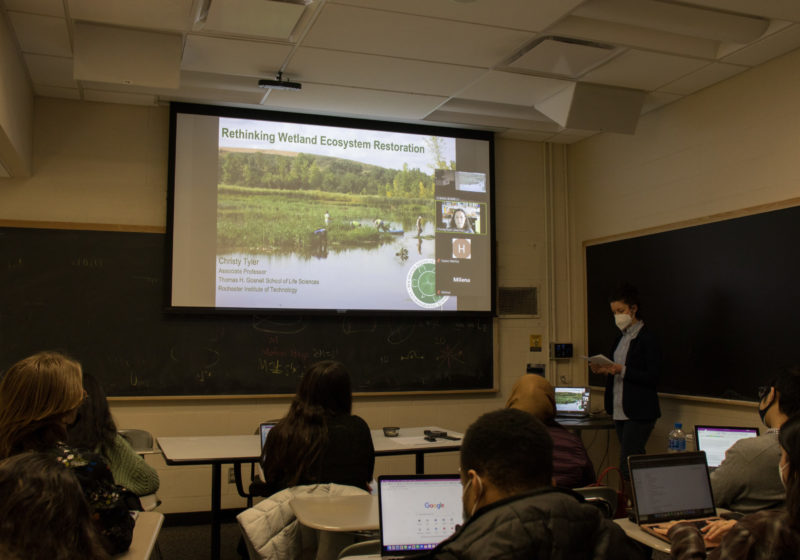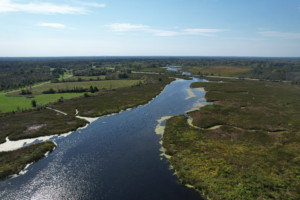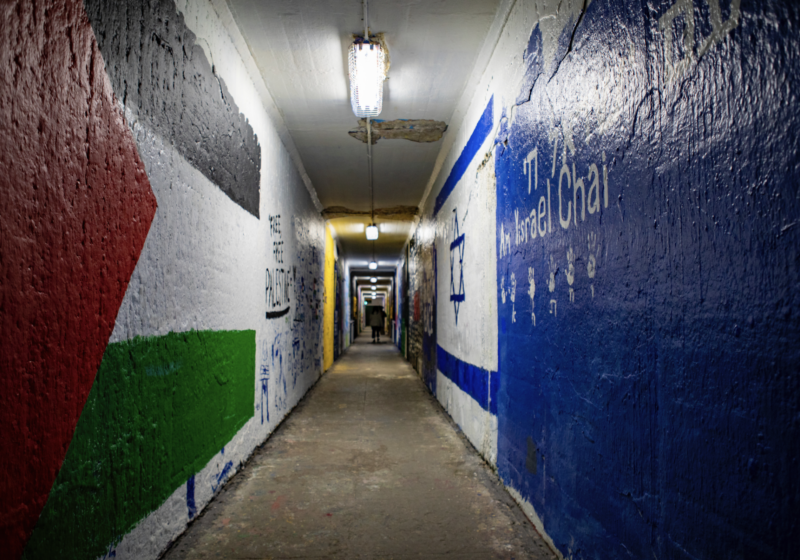Participants gathered virtually for Dr. Christy Tyler’s Science and Sustainability Seminar on Wetlands and Sustainability on Wednesday evening. Co-sponsored by the Earth and Environmental Science Department and the Environmental Sustainability University Committee for Interdisciplinary Studies (UCIS), Tyler discussed how to rethink wetland ecosystem restoration.
As a Professor and Director of the Graduate Program in Environmental Science at RIT, Tyler focused on her research with students, specifically testing wetlands in the greater Rochester region. She addressed the results as critical in shaping how the community thinks about sustainability in their environmental community.
“Instead of setting aside land, we need to restore the land we [already] have,” Tyler said early on in the talk. With data and graphs displayed on her Zoom screen, she noted the trend of habitat loss by species going extinct and a decline in ecosystem services. Instead of creating new ecosystems, Tyler urged the importance of restoring rather than preserving land.
She also emphasized the act of intervention in ecosystem restoration as being different from conservation. Ecosystem restoration is defined as “an active process of changing the landscape,” according to Tyler.
“We’ve lost almost 50% of wetland area in the contiguous US,” Tyler said. According to her observations, the functions of restoration have been difficult due to development. With this in mind, Tyler and her students have been working for almost 13 years in manipulating the environment with considerations of hydrology, nutrient inputs, land use, and invasive species.
Tyler says hydrology is key to maintaining a healthy, “self-designed” ecological system. When assessing the structure of wetlands under a routine period, Tyler and her students asked the following questions: Is the water level right? Are the plants hydrophytic (adapted to grow in water)? Are invasive species present?
According to Tyler, these questions were essential in order to understand how restoration can be most effective. “Disturbance leads to invasion,” Tyler said.
Likewise, Tyler brought up a critical question in restoration: “Can we create a ‘real’ wetland?” The consequence to restored wetlands is that they may not be functional in the long term. Methods for invasive plant control in wetlands are expensive, time-consuming and problematic.
Under low nutrients, Tyler noted that native plants are allowed to thrive. However, it’s a delicate balance. More nutrients can lead to invasion. Tyler’s goal in restoration is to reduce the nitrogen pool and to improve the competitiveness of native plants. Additionally, her research led to testing if the addition of carbon shifts the competitive balance to favor native species.
Despite the complications with an increase in development and industrialization, Tyler says there is worthwhile intervention in actively restoring wetlands. “Restoration is gaining a lot of focus,” Tyler said. “We’re in the middle of the UN’s decade of ecosystem restoration, so there’s a lot of energy around ideas of restoration […] and hopefully progress.”






